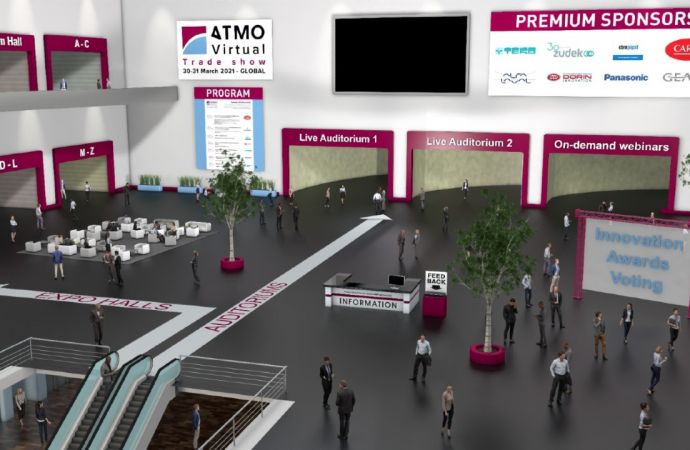From 29-31 March 2010, the reverend buildings of the Cambridge university campus hosted the first International Conference on Cold Chain and Sustainability organised by the UK Institute of Refrigeration with 150 delegates from 22 countries participating and over 80 papers presented. Dave Pearson, Director of Innovation at Star Refrigeration Ltd and natural refrigerants expert, offers his personal view from inside the conference to the ammonia21.com community.

The 1st IIR International Conference on the Cold Chain and Sustainability was fully subscribed and those organised enough to apply in good time were provided a unique opportunity to listen to industry experts, visit innovative installations and participate in short courses.
The general atmosphere
With over 80 papers, 3 tours and 3 short courses the biggest challenge was picking where to go, but the event was organised with excellent efficiency and time keeping throughout by the UK's Institute of Refrigeration.
At a banquet dinner served in the great hall of Selwyn College Cambridge the 150+ delegates and a few "significant others" had the opportunity to network with peers from around the world which provided some light relief in an otherwise hectic and challenging programme. Of course in such tranquil settings there was always plenty of space for reflection and fresh air.
The Carbon Trust Refrigeration Road Map
The technical programme commenced with the keenly awaited "Carbon Trust Refrigeration Road Map". Copies will be available for download from www.ior.org.uk later in April 2010. Billed as "an Action plan for the retail sector" the map summarises the likely benefits and costs of 44 disparate technologies that would each help lower the carbon footprint of the retail industry.
Papers throughout the conference followed this theme with a variety of approaches including a progress update on the planned development of low GWP synthetic working fluids, REAL Zero - the campaign to minimise leakage of refrigerants -, natural refrigerants in the cold chain, energy recovery options from supermarkets and the use of district cooling waste heat to drive desalination systems.
Natural Refrigerants
Inevitably natural refrigerants featured strongly and with solutions available from individual cold cabinets using CO2 to supermarkets using both CO2 cascade and CO2 transcritical solutions to district heating systems using ammonia there was a terrific spirit of optimism. There was an discrete warning message however with safety equipment featuring prominently on the site visits. Likewise, both the "Energy Efficient Two-stage Ammonia Cold Store" and the "CO2 TC supermarket systems"demonstrated the need to work hard to build efficiency into a design as it doesn't happen by chance.
Innovation
Dr Andy Pearson, President Elect of the IOR, gave the closing paper of the conference. Despite the late time slot, the near capacity audience listened intently as Dr Pearson shared some observations from the often pilloried Thomas Midgley Jr. Midgley has a strange position in scientific folklore. As the pioneer of lead additives to prevent combustion engine "knocking" and the father of CFCs he brought a significant added value to the world as he understood it. Of course as history records, both these innovations were shown to require "updating" but it was the manner in which Midgley sought to embrace change that was the focal point of the paper. Asking "What makes an Innovator?", Dr Pearson suggested the following:
The conference closed and the weary dispersed. Time will tell what impact the proceedings will have on the "Cold Chain and Sustainability" but it was evident to those attending that the solutions are not just "hot air" but real practical proven techniques that WILL bring about a lower carbon lifestyle if we give them the support needed.
The general atmosphere
With over 80 papers, 3 tours and 3 short courses the biggest challenge was picking where to go, but the event was organised with excellent efficiency and time keeping throughout by the UK's Institute of Refrigeration.
At a banquet dinner served in the great hall of Selwyn College Cambridge the 150+ delegates and a few "significant others" had the opportunity to network with peers from around the world which provided some light relief in an otherwise hectic and challenging programme. Of course in such tranquil settings there was always plenty of space for reflection and fresh air.
The Carbon Trust Refrigeration Road Map
The technical programme commenced with the keenly awaited "Carbon Trust Refrigeration Road Map". Copies will be available for download from www.ior.org.uk later in April 2010. Billed as "an Action plan for the retail sector" the map summarises the likely benefits and costs of 44 disparate technologies that would each help lower the carbon footprint of the retail industry.
Papers throughout the conference followed this theme with a variety of approaches including a progress update on the planned development of low GWP synthetic working fluids, REAL Zero - the campaign to minimise leakage of refrigerants -, natural refrigerants in the cold chain, energy recovery options from supermarkets and the use of district cooling waste heat to drive desalination systems.
Natural Refrigerants
Inevitably natural refrigerants featured strongly and with solutions available from individual cold cabinets using CO2 to supermarkets using both CO2 cascade and CO2 transcritical solutions to district heating systems using ammonia there was a terrific spirit of optimism. There was an discrete warning message however with safety equipment featuring prominently on the site visits. Likewise, both the "Energy Efficient Two-stage Ammonia Cold Store" and the "CO2 TC supermarket systems"demonstrated the need to work hard to build efficiency into a design as it doesn't happen by chance.
Innovation
Dr Andy Pearson, President Elect of the IOR, gave the closing paper of the conference. Despite the late time slot, the near capacity audience listened intently as Dr Pearson shared some observations from the often pilloried Thomas Midgley Jr. Midgley has a strange position in scientific folklore. As the pioneer of lead additives to prevent combustion engine "knocking" and the father of CFCs he brought a significant added value to the world as he understood it. Of course as history records, both these innovations were shown to require "updating" but it was the manner in which Midgley sought to embrace change that was the focal point of the paper. Asking "What makes an Innovator?", Dr Pearson suggested the following:
- Be dissatisfied with the current state of affairs
- Draw on a broad range of observations and experience
- Engage with people who use the current technology in their everyday routine
- Be flexible and willing to modify the approach to a problem
- Pass responsibility to the young people in your organisation
- Help them to network with people outside their normal circle of contacts
- Let them exercise their curiosity
- Give them credit for what they achieve
The conference closed and the weary dispersed. Time will tell what impact the proceedings will have on the "Cold Chain and Sustainability" but it was evident to those attending that the solutions are not just "hot air" but real practical proven techniques that WILL bring about a lower carbon lifestyle if we give them the support needed.
MORE INFORMATION
Related stories









